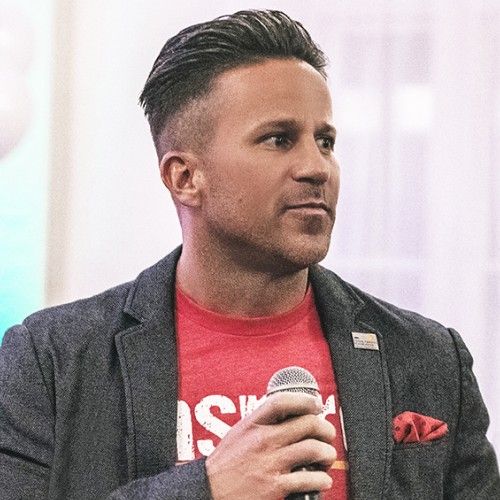Emma, a seasoned manager at a mid-sized technology company, had always believed in the power of innovation. Her company was known for its cutting-edge solutions, and leadership consistently emphasized the importance of staying ahead of the curve. However, as the company grew, Emma noticed a disconnect between the innovative goals the company was setting and the day-to-day efforts of her team. Despite their technical skill and dedication, her team seemed to be losing focus on the big picture—where the company was heading and how they fit into that vision.
As the company rolled out a new initiative to demonstrate innovation to clients, Emma knew she needed to rethink how to align her team’s goals with the company's larger vision. It wasn’t just about setting targets or assigning tasks; it was about ensuring her team felt motivated and understood the value of their work in driving innovation forward. Emma began to consider how incentives could play a role in achieving this cohesion, but she knew it would require careful evaluation and constant tinkering.
Establishing Clear Job Goals
To begin, Emma revisited the job goals for each member of her team. While everyone had clear responsibilities, Emma realized that the team needed more than just a list of tasks—they needed a deeper understanding of how their roles contributed to the company’s goal of demonstrating continuous innovation to its clients. She gathered her team for a meeting, focusing on how their individual efforts fit into the bigger picture.
Key elements Emma focused on:
- Ensuring each team member understood the specific outcomes their work was driving toward (e.g., new product development, process improvements).
- Aligning short-term goals with long-term innovation targets set by leadership.
- Regularly updating job goals to reflect shifts in the company’s priorities.
By breaking down broader company objectives into actionable, measurable steps, Emma’s team began to see how their contributions mattered. However, simply understanding the goals wasn’t enough; Emma also needed to create incentives that reflected these objectives.
Crafting Incentives That Align with Organizational Goals
Emma knew that financial incentives could motivate her team, but she also understood that innovation requires more than just monetary rewards. To keep her team inspired, Emma developed a balanced system of financial and non-financial incentives that aligned with the company’s vision.
She also considered how different members of her team were motivated by different types of rewards. Some employees thrived on the prospect of a bonus, while others valued recognition or the opportunity to grow professionally. To create an environment where innovation was constant, Emma decided that the incentives needed to reflect both individual motivators and the collective drive to push the company forward.
Financial incentives Emma implemented:
- Innovation bonuses: Team members were rewarded for submitting and implementing new ideas that improved products or processes, with quarterly bonuses tied to the success of their innovations. This direct financial reward ensured that those who contributed to the company’s progress saw immediate benefits, encouraging a proactive approach to problem-solving.
- Profit-sharing linked to innovation milestones: Instead of traditional profit-sharing based on general company performance, Emma adjusted the plan to reflect key innovation achievements, ensuring her team’s financial rewards were directly tied to the company’s larger goals. This not only incentivized innovation but also helped employees feel more connected to the company’s financial success.
Non-financial incentives Emma introduced:
- Recognition programs: Emma launched a monthly “Innovator of the Month” award, spotlighting employees who contributed to the company’s innovation efforts. This not only boosted morale but also encouraged healthy competition. Public recognition in company-wide meetings gave employees a sense of pride and ownership over their contributions.
- Opportunities for professional growth: Emma partnered with upper management to provide her team with opportunities to attend conferences, enroll in advanced courses, and participate in cross-departmental projects that aligned with the company’s innovative initiatives. Offering educational incentives reinforced the company's commitment to long-term development and creativity.
- Time for creative exploration: In addition to formal rewards, Emma allowed her team to dedicate a certain percentage of their work hours to projects outside of their typical responsibilities. This freedom gave employees the space to experiment and explore new ideas without the pressure of immediate results, fostering a culture of curiosity and innovation.
Evaluating and Re-Evaluating Incentives
After a few months, Emma took a step back to evaluate how her incentive structure was working. She noticed that while financial rewards motivated some team members, others were more driven by recognition and professional development opportunities. Innovation had increased, but there were still areas where the team struggled to stay focused.
To address this, Emma made adjustments to the incentive plan. She introduced periodic check-ins to gather feedback from her team on what motivated them the most and what barriers they faced in achieving their innovation-related goals.
Emma discovered three key insights:
- Flexibility was crucial. Some team members valued immediate recognition more than long-term rewards, so Emma implemented smaller, more frequent bonuses alongside the larger innovation-based profit-sharing program.
- Transparency drove engagement. By sharing detailed updates on how their contributions directly impacted the company’s client relationships and overall growth, Emma’s team felt more connected to the larger vision.
- Continuous feedback improved performance. Regular one-on-one meetings allowed Emma to tweak incentives based on individual preferences and changing market conditions, keeping her team motivated and aligned.
Emma’s journey taught her that the key to aligning team goals with organizational vision lay in balancing financial incentives with a broader sense of purpose. By crafting a dynamic incentive system, Emma helped her team see the value of their contributions not just in terms of personal gain but as part of the company’s mission to lead in innovation.




































































